Alfa Laval Safety Valves
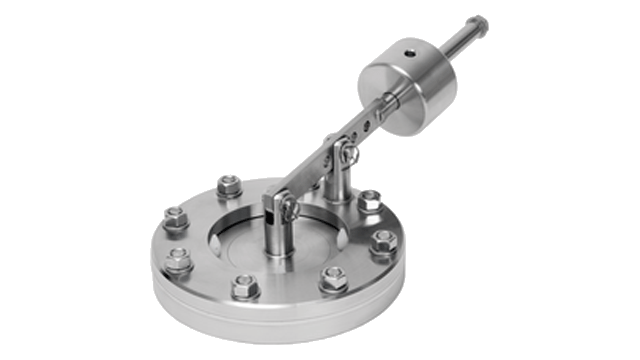
Safety valves are used for overpressure or vacuum protection in tank and pipelines. Protects against implosion due to vacuum caused by cold rinsing after hot cleaning; against implosion due to caustic absorbed in CO2 atmosphere/temperature fluctuations or against implosion due to blocking of gas supply during emptying.
Alfa Laval Valve Automations: Indication Unit, IndiTop, ThinkTop, ThinkTop Basic, ThinkTop D30, GreenTop
 Scandi Brew (SB) Pressure Relief Valve
Scandi Brew (SB) Pressure Relief Valve
To prevent damage to the tank and help ensure safe operations, ABS offers the Alfa Laval SB Pressure Relief Valve protects a pressurized tank during an overpressure event. It is designed for hygienic processes in the brewery, dairy, food and beverage industries. The valve can be integrated with a SCANDI BREW® tank top system.
Related Industries:
Processed Foods, Dairy, Beverages, Home & Personal Care
Effective pressure relief
This pressure relief valve removes excess liquid that creates overpressure in the tank due to overfilling. When pressure in the tank exceeds a preset value, the pressure relief valve opens to vent fluid in the event of liquid overfilling, and closes when the tank pressure has returned to a safe level.
Easy-to-clean hygienic design
Few moving parts and smooth, crevice-free stainless steel surfaces make this valve easy to clean. When the valve is in closed position, it is cleaned as part of the routine Cleaning-in-Place (CIP) cycle. For thorough cleaning of the valve seat, an optional pneumatic force opener and a splash guard is available.
Construction
The Alfa Laval SB Pressure Relief Valve is a dead weight safety valve. It is compliant with PED 97/23/EC, EN 4126-1 and EN 764-7 and is available in two versions:
- Integrated with a SCANDI BREW® tank top system
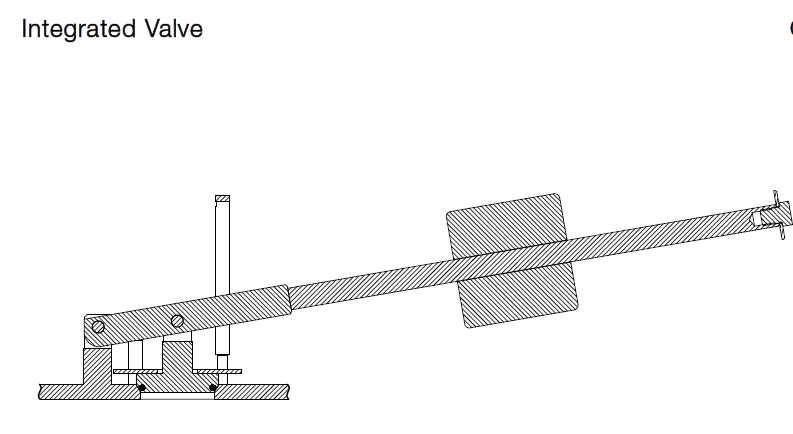
- Mounted on its own counter flange
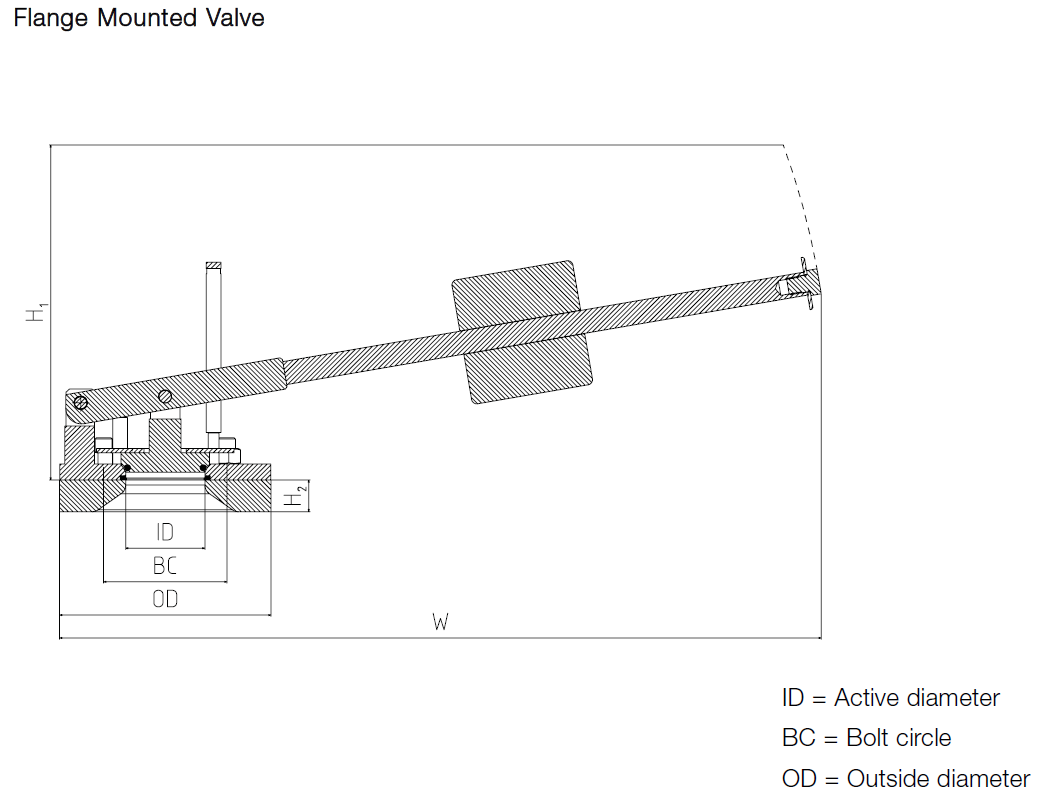
Operating principle
The pressure relief valve is delivered with the counterweight set and locked at the preset pressure that meets the customer’s requirements for opening pressure. When pressure in the tank exceeds the preset opening value, the valve relieves the excess pressure.
The preset opening pressure must be set at a value that is above the tank working pressure: 0.1 bar above for working pressures <1 bar, and 10% above for working pressures ? 1 bar. The valve should be seated horizontally. A maximum inclination of 10° is acceptable, but the lever arm must then point inward toward the centre of the cylindroconical tank top.
Cleaning-in-Place (CIP)
The valve is cleaned in closed position by the tank cleaning head. However, this does not include cleaning of the valve seat. To include the valve seat as an integral part of the cleaning cycle, an optional pneumatic force opener and optional splash guard are available.
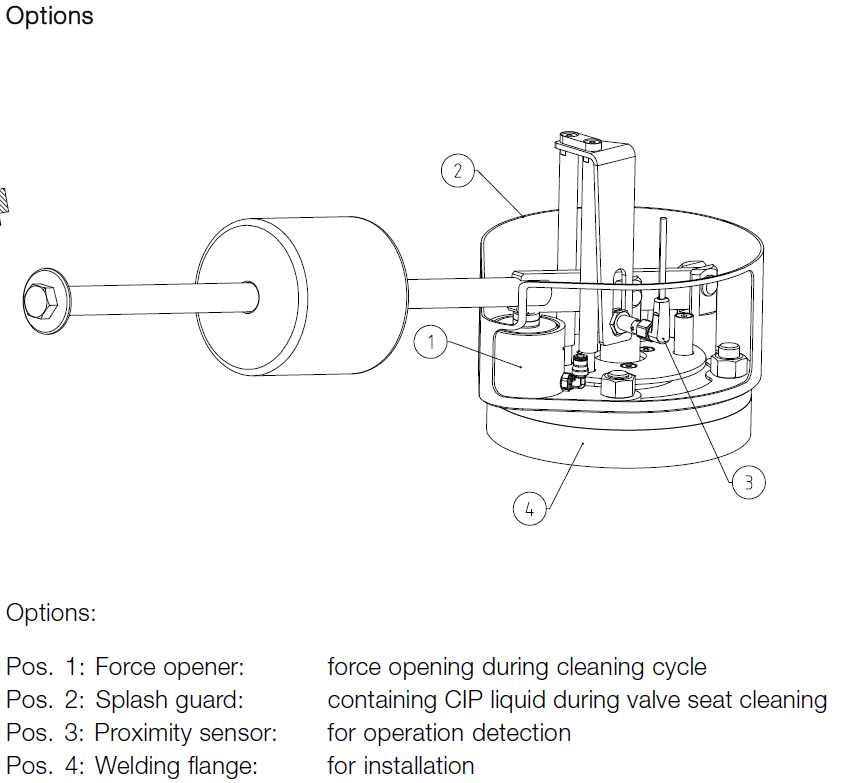
Concept
The Pressure Relief Valve is used for minimizing the risk of damage
to tanks due to liquid overfilling.
Working Principle
The Pressure Relief Valve is delivered with counter weight set and
locked to suit customer requirements regarding opening pressure.
When pressure in the tank exceeds the preset opening value, the valve
relieves the excess pressure.
Standard Design
The Pressure Relief Valve is available in two versions:
• Integrated in a SCANDI BREW® tank top system
• Mounted on its own welding flange
Compliance to EN 4126-1
Compliance to EN 764-7
Compliance Pressure Equipment Directive 2014/68/EU of the
European Community, Fluida Group II
The advantages of an integrated Pressure Relief Valve are lower initial
costs, superior hygiene and smaller area required for the valve. The
size and setting of the Pressure Relief Valve is based on the tank
design data and process requirements.
TECHNICAL DATA
Nominal size Set Pressure Range
75mm. . . . . . . . . . . . . . . . . . . . . . 0.2 – 3.5 bar
100mm . . . . . . . . . . . . . . . . . . . . 0.2 – 2.5 bar
150mm . . . . . . . . . . . . . . . . . . . . 0.4 – 1.5 bar
PHYSICAL DATA
Materials
Product wetted steel parts: . . .EN 1.4404 (AISI 316L) with 3.1 cert.
Product wetted steel surfaces: .Surface roughness Ra<0.8 ?m
Product wetted seals: . . . . . .EPDM
Cleaning In Place (CIP)
The Pressure Relief Valve is cleaned in closed position by the tank cleaning head, but this will not include the valve seating. To include the valve seating
in the cleaning cycle, there is the option to equip the valve with a pneum. force opener and a splash guard.
 Scandi Brew (SB) Anti Vacuum Valve
Scandi Brew (SB) Anti Vacuum Valve
Integrated in a SCANDI BREW® tank top system, the Alfa Laval SB Anti Vacuum Valve is a compact safety valve that minimizes the risk of implosion of tanks when a vacuum condition arises. These conditions occur while filling or emptying the vessel of liquid, cool rinsing after hot-cleaning or caustic cleaning in a CO2 atmosphere. Designed for use in the brewery, dairy, food and beverage industries, it helps optimize the safety, reliability and performance of critical processes and maximize uptime.
Related Industries:
Food and Beverage Processings
Low initial cost of investment
With a durable and robust design, the SB Anti Vacuum Valve protects tanks from collapse due to internal vacuum conditions. Its low initial cost of investment provides return on investment over the long term as a result of operational reliability and enhanced service life, combined with reduced product loss, greater process safety and improved hygiene.
Compact valve design
Compact and robust, the hygienic SB Anti Vacuum Valve easily fits onto the top of any closed tank. The valve size and setting is based on the tank vacuum rating, maximum allowable emptying speed, cleaning procedure and process requirements.
Superior valve hygiene
Engineered to provide excellent hygiene and cleanability, the SB Anti Vacuum Valve features high-quality stainless steel with a surface finish of Ra ? 0.8?m. Alfa Laval seal technology also offers greater thermal stability, better chemical resistance and improved tensile strength. This highly reliable valve conforms to PED 97/23/EC requirements. Alfa Laval3.1 traceability certification is also available upon request.
Product benefits
- Low initial cost of investment
- Compact design
- Superior hygiene
- Easy installation
Construction
The Alfa Laval SB Anti Vacuum Valve is a flange mounted safety valve that an integral part of a SCANDI BREW® tank top system. All product wetted steel parts are made of AISI 316L stainless steel with a surface roughness of Ra<0.8 ?m; all other steel parts are made of AISI 304L stainless steel. All product wetted seals are made of EPDM and all product wetted polymers are made of PEEK.
It is available in two versions:
- Integrated in a SCANDI BREW® tank top system
- Mounted on its own counter flange
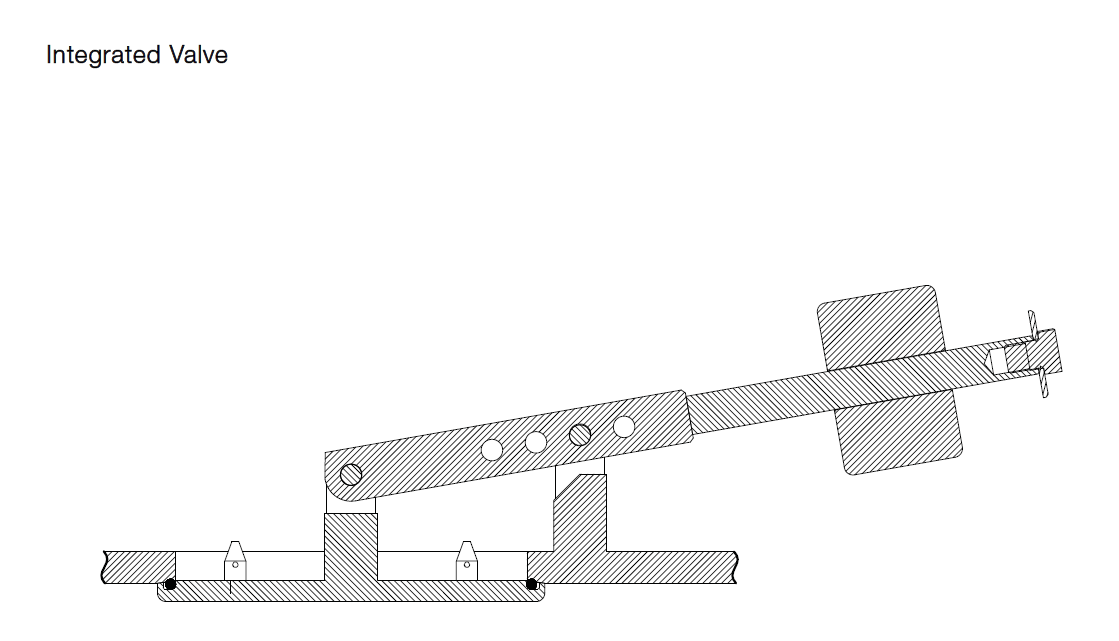
The valve should be seated horizontally. A maximum inclination of 10° is acceptable, but the lever arm must then point in to the center of the cylindroconical tank top.
Operating principle
The SB Anti Vacuum Valve is delivered with counterweight set and locked for an individual opening vacuum to suit the tank design data. When a vacuum in the tank is lower than the preset opening value, the valve opens and lets in atmospheric air.
Cleaning-in-Place (CIP)
The Anti Vacuum Valve is cleaned, when closed, by the tank cleaning head. However, this does not include cleaning of the valve seat. There are two options available for CIP of the valve seat (see Options below).
It is very important to note that if the cleaning procedure includes hot cleaning, the valve should be dimensioned with the purpose of preventing implosion from the vacuum that appears when flushing with cold water.
Options
These two options are available for Cleaning-In-Place (CIP) of the valve seat.
CIP Kit 1: Force opener and splash guard
The valve is forced opened during tank CIP. The cleaning of valve seat is dependent on cleaning jets from the tank cleaning head. Any CIP liquid that escapes the tank is contained by the splash guard and drains back into the tank.
CIP Kit 2: Force opener, splash guard, CIP nozzle and CIP closing valve
The valve is forced opened during tank CIP. The cleaning of valve seat is performed by the CIP nozzle. All CIP liquid from the CIP nozzle is contained by the splash guard and drains back into the tank.
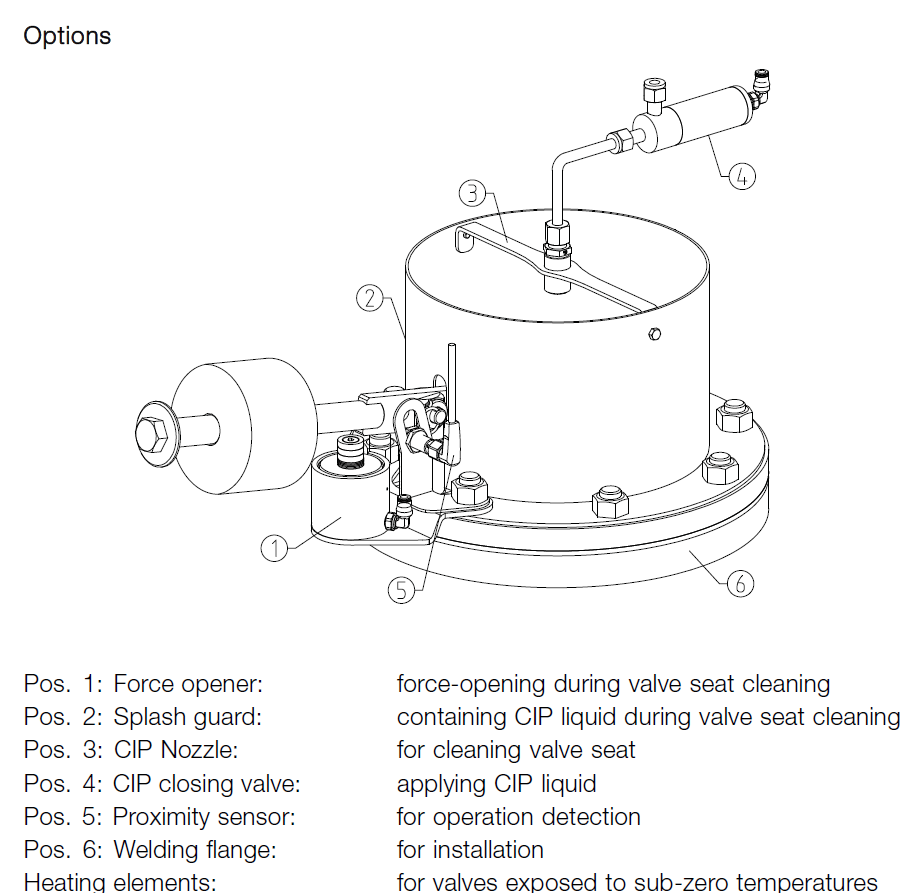
Concept
The Anti Vacuum Valve is used for minimizing the risk of implosion of
tanks exposed to vacuum e.g. during emptying, cool-rinsing after
hot-cleaning or caustic cleaning in a CO2 atmosphere. The Anti
Vacuum Valve can be applied on any closed tank.
Working principle
The Anti Vacuum Valve is delivered with counter weight set and locked
for an individual opening vacuum to suit the tank design data. When a
vacuum in the tank is lower than the preset opening value, the valve
opens and lets in atmospheric air.
TECHNICAL DATA
| Nominal Size | Opening Pressure range | Allowable Pressure PS |
| 100mm | 50-500 mmH2O | 6 bar |
| 150mm | 25-500 mmH2O | 6 bar |
| 200mm | 25-500 mmH2O | 6 bar |
| 250mm | 25-300 mmH2O | 4 bar |
| 300mm | 25-500 mmH2O | 4 bar |
| 400mm | 25-100 mmH2O | 4 bar |
PHYSICAL DATA
Materials
Product wetted steel parts: EN 1.4404 (AISI 316L) with 3.1 cert.
Product wetted steel surfaces: Surface roughness Ra<0.8 µm
Product wetted seals: EPDM
Product wetted polymers: PEEK
Other steel parts: EN 1.4307 (AISI 304L)
Standard design
The Anti Vacuum Valve is available in two versions:
• Integrated in a SCANDI BREW® tank top system
• Mounted on its own counter flange
Compliance Pressure Equipment Directive 2014/68/EU of the
European Community, Fluida Group II
The advantages of an integrated Anti Vacuum Valve are lower initial
costs, superior hygiene and smaller area required for seat valve.
The size and setting of the Anti Vacuum Valve is based on the tank
vacuum rating, maximum emptying speed, cleaning procedure and
process requirements. The Anti Vacuum Valve is produced in a
hygienic and robust design. Heating elements are available for valves
exposed to sub-zero temperatures.
It is very important to note that if the cleaning procedure includes
hot-cleaning, the valve should be dimensioned with the purpose of
preventing implosion from the vacuum that appears when flushing
with cold water.
The Anti Vacuum Valve should be seated horizontally. An inclination
of max. 5° is acceptable but the lever arm must then point in to the
center of the cylindro-conical tank top.
Cleaning In Place (CIP)
The Anti Vacuum Valve is cleaned, when closed, by the tank cleaning
head, but this will not include the valve seating.
To include the valve seating in the cleaning cycle, there are two options:
CIP Kit 1 – Force opener; splash guard
The valve is force-opened during tank CIP. The cleaning of valve seat
is dependent on cleaning jets from the tank cleaning head. Any CIP
liquid escaping the tank is contained by the splash guard and drains
back in to the tank.
CIP Kit 2- Force opener; splash guard; CIP nozzle; CIP closing
valve
The valve is force-opened during tank CIP. The cleaning of valve seat
is performed by the CIP nozzle. All CIP liquid from the CIP nozzle is
contained by the splash guard and drains back in to the tank.
NOTE: Applying any of above CIP options provides that the tank is
pressureless at the moment of force opening the Anti Vacuum Valve.
Options
Pos. 1: Force opener: force-opening during valve seat cleaning
Pos. 2: Splash guard: containing CIP liquid during valve seat cleaning
Pos. 3: CIP Nozzle: for cleaning valve seat
Pos. 4: CIP closing valve: applying CIP liquid
Pos. 5: Proximity sensor: for operation detection
Pos. 6: Welding flange: for installation
Heating elements: for valves exposed to sub-zero temperatures
 Scandi Brew (SB) Anti Vacuum House
Scandi Brew (SB) Anti Vacuum House
The Alfa Laval SB Anti Vacuum House minimizes the risk of implosion in closed process tanks that are subject to vacuum conditions, such as while filling or emptying the tank, cool rinsing after hot-cleaning, or caustic cleaning in a CO2 atmosphere. Capable of being integrated into a SCANDI BREW® tank top system, the valve is designed for hygienic processes in the brewery, dairy, food and beverage industries.
Related Industries:
Food and Beverage Processing
Effective vacuum protection
When high process safety and production reliability are critical, this unit help protect tanks from vacuum conditions that may cause tank damage or deformation and product leakage.
Cost-efficient, reliable and easy to install, it provides effective vacuum protection, while boosting process reliability and safety.
Versatile hygienic design
In addition to providing tank vacuum protection, the unit can be used in combination with safety valves or regulating valves to provide overpressure protection and process protection,respectively.
Excellent valve cleanability
The anti vacuum house makes it possible to achieve the exceptionally high levels of hygiene. Simply connect the unit to the main Cleaning-in-Place (CIP) system using a CIP nozzle. This enables fast and effective cleaning during the routine tank CIP cycle.
Product benefits
- Minimal risk of tank collapse due to internal vacuum conditions
- Fully cleanable with CIP system
- Easy to integrate
- Low investment due to simplified installation
Construction
Compliant with PED 97/23/EC, the Alfa Laval SB Anti Vacuum House consists of an AISI 316L stainless steel house, a vacuum tail and an EPDM seal. The valve can be used as an integral part of a SCANDI BREW® tank top system.
Operating principle
The anti vacuum house provides protection against tank collapse due to internal vacuum conditions. When used with safety valves, it helps protect the vessel and ensure discharge if pressure in the tank exceeds the preset opening value. When used with regulating valves, it helps ensure pressure relief if pressure in the tank exceeds the preset opening value.
Cleaning-in-Place (CIP)
During every tank cleaning cycle, a small volume of cleaning fluid (approximately 500 to 800 l/min.) will pass the valve body and clean the seat. To ensure thorough flushing of the valve seat, force opening of the valve is required and must be done when there is no pressure in the tank. The use of a drain collector is recommended to prevent the CIP fluid from spilling onto the tank.
Options
For tank overpressure protection and process protection, the SB Anti Vacuum House can be combined with a CO2 house, pressure relief valve and pressure exhaust valve.
Concept
The Anti Vacuum House is used for minimizing the risk of implosion
of tanks exposed to vacuum e.g. during emptying, cool-rinsing after
hot-cleaning or caustic cleaning in a CO2 atmosphere. The Anti
Vacuum House can be combined with safety valves or pressure
regulators mounted the top.
Working principle
The Anti Vacuum House operates as standard at 50 mmH2O / 5
mbar for all valve sizes. Safety valves protect the vessel and ensures
discharge if pressure in the tank exceeds the preset opening value.
Regulating valves ensures pressure exhaust if pressure in the tank
exceeds the preset opening value.
Standard design
The Anti Vacuum House can be cleaned during tank CIP cycle by
connecting CIP nozzle to main CIP supply.
CIP flow is approximately 500-800 l/min.
When the tank is cleaned a small volume of cleaning fluid will pass the
valve body and clean the seat. To ensure thorough flushing of valve
seat, force opening of the valve is necessary – this must be done when
the tank is pressureless. The use of a drain collector is recommended
to prevent CIP fluid spilling on to the tank.
Compliance Pressure Equipment Directive 2014/68/EU of the
European Community, Fluida Group II
PHYSICAL DATA
Materials
Product wetted steel parts: EN 1.4404 (AISI 316L)
Product wetted seals: EPDM
Connections
Nut and liner acc. DIN 11851
Clamp ferrule ISO 2852
Nut and liner acc. SMS Swedish Standard Union
Weld End acc. DIN 11850 or ISO 2037 depending on valve size
Options
The Anti Vacuum House provides vacuum protection and can be
combined with other valves to provide following functions:
• Safety valves for tank overpressure protection
• Regulating valves for process protection
 Safety Valve
Safety Valve
The Alfa Laval Safety Valve protects your equipment, your environment, and the health and safety of your workers. This safety device is designed to open and relieve excess pressure from vessels or equipment and then reclose and prevent the further release of fluid when the system returns to normal.
Related Industries:
Food and Beverage, Dairy Processing
Relieve excess pressure
Pressure can build inside vessels or systems due to blocked discharge, thermal expansion, chemical reactions, or a combination of these events. The Alfa Laval Safety Valve is designed to flexibly relieve excess pressure from vessels or equipment at all times and under any circumstances. As the last and vital component in accident prevention, a high-quality, hygienic safety valve is an essential part of your operations.
Get the perfect fit
Depending on the causes of excess pressure, a different mass or volume flow may need to be discharged. With this type of variable flow, a perfectly fitted safety valve is essential. The Alfa Laval Safety Valve comes in sizes from DN25 to DN100 with a spring-loaded set pressure range between 0.2 and 12.0 bar depending on the size of the valve.
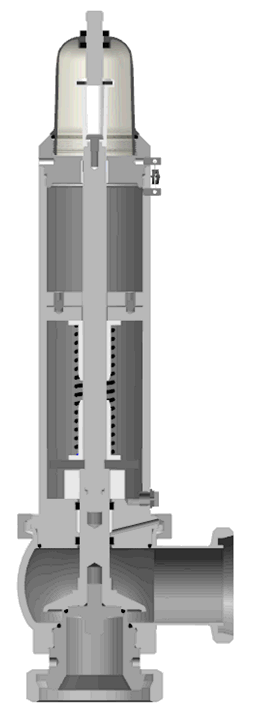
Reliable protection
In a potentially dangerous situation, the Alfa Laval Safety Valve is designed to open at a predetermined set pressure. The compressed spring force, which keeps the valve closed below the set pressure, is forced open when pressure builds up at the inlet of the safety valve. As these forces balance out, the valve will discharge and decrease pressure, ultimately reclosing as the system returns to normal.
Construction
The Alfa Laval Safety Valve comes in sizes from DN25 to DN100 with spring loaded set pressure range from 0.2 to 12.0 bar. The valve can be pneumatic or manually operated. The Alfa Laval Safety Valve is calibrated to the desired pressure set point, sealed and delivered with a corresponding PED certificate.
Operating principle
The closing force in the Alfa Laval Safety Valve is applied by a compressed spring with a set pressure greater than the operating pressure.
In a potentially dangerous situation, the valve will open at the predetermined set pressure. The spring force acts in the closing direction and the force created by the pressure at the inlet of the safety valve acts in the opening direction. At a certain point, these forces will be balanced out and the valve will make an initial discharge to relieve the pressure.
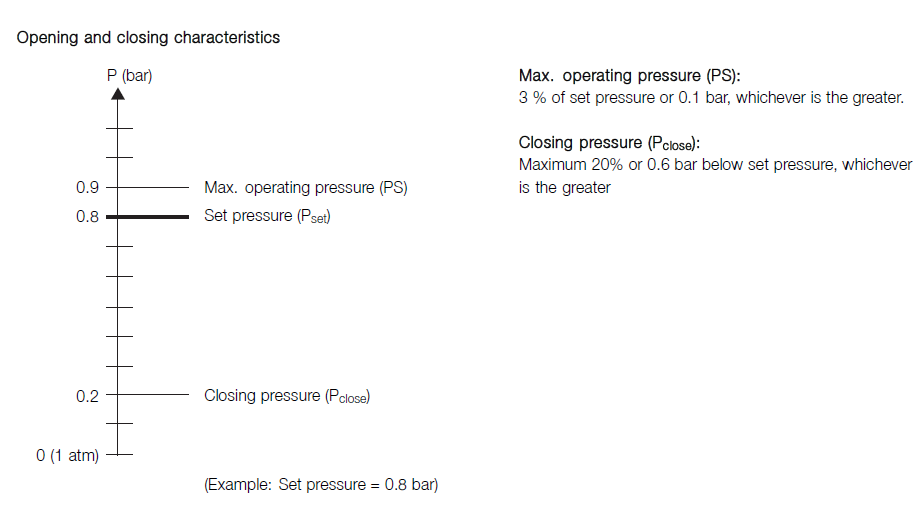
Concept
The Alfa Laval Safety Valve is a spring loaded safety valve used to
prevent overpressure in tanks and vessels in the dairy, food and
beverage, and biopharm industries to reliably avoid damages to human
beings and equipment.
Working principle
It is used to prevent inadmissible over pressures of fluids in tanks,
containers and plant sections. From the factory the valve is configured
with a set pressure upon request that is greater than the operating
pressure. The valve opens against a spring force if the operating
pressure increases the set pressure. Preferably, the Alfa Laval Safety
Valve should be installed vertically. If mounted horizontal the set
pressure will be a bit lower than specified due to the missing weight of
the piston. Highest effect on DN80 and DN100.
Standard Design
The Alfa Laval Safety Valve comes in sizes from DN25 to DN100
with spring loaded set pressure range from 0.2 to 12 bar. The valve
can be pneumatic or manually operated. Alfa Laval Safety Valve is
delivered with PED certificate. Compliance to EN 4126-1 Compliance
to PED 2014/68/EC of the European Community. Fluid group II
(Non-hazardous fluids).
The safety valve is available for both liquids and gases*
TECHNICAL DATA
Temperature
Temperature range: . . . . . . . . . . . . . . . . .+5°C to +95 °C
Max. sterilisation temperature, dry steam: . .140 °C
*DN25 for gas applications is only available for set pressure up to 1.5
bar
PHYSICAL DATA
Materials
Product wetted parts: . . . . . . . . . . . 1.4404 (316L)
Other steel parts: . . . . . . . . . . . . . . 1.4301 (304)
Seals: . . . . . . . . . . . . . . . . . . . . . . EPDM
External finish: . . . . . . . . . . . . . . . . Ra 1.5-2.5 µm
Internal finish . . . . . . . . . . . . . . . . . Ra 0.8 µm
Connections: . . . . . . . . . . . . . . . . . Liner/nut – male DIN 11851
Option:
Inductive sensor for feedback is available for standard and pneumatic
lifting – see instruction manual for detail.
